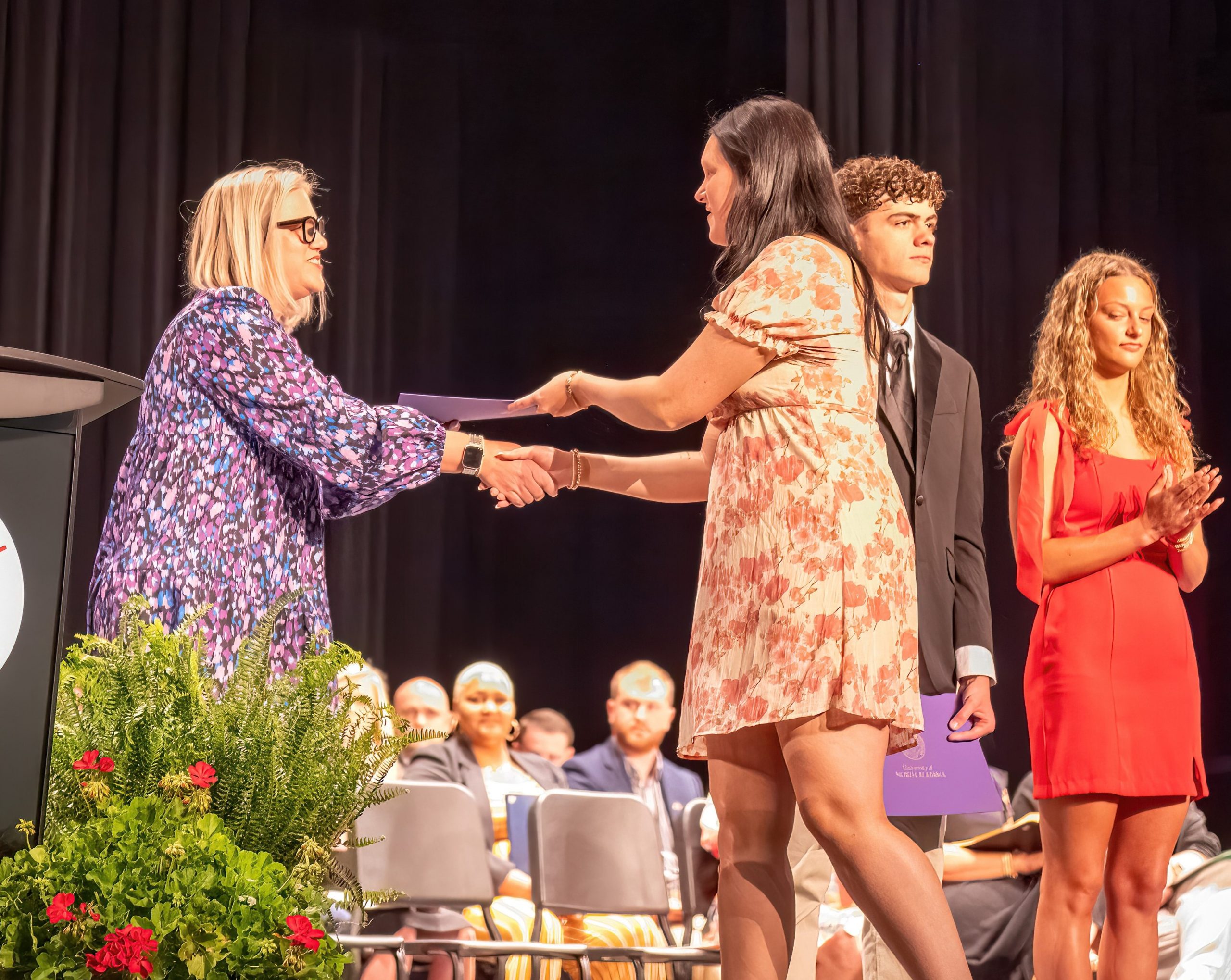Wetlands adventure entertains, informs homeschoolers
For the Enquirer
Shayna Terry and Emily Chairez stared down a “pretty big crawfish” last week during an Earth Day event near Hartselle.
“He was pretty big, but he didn’t pinch me,” said Terry, a 12-year-old homeschool student showing her pride at lassoing the crawfish with a big net at the wetlands area.
Some 60 homeschoolers and 18 volunteers came out for an Earth Day event to plant trees and seed bombs, tour the wildflower meadow, do arts and crafts, search for fish and amphibians, and generally commune with nature.
“We just want the kids to celebrate nature, take care of the planet and become interested in conservation,” said Kelly Holladay Richardson, education coordinator for elementary and middle schools with the Morgan County Soil and Water Conservation District, which organized the event. The event was held at the U.S. Department of Agriculture Service Center.
The homeschoolers – who represented Master’s Hand Christian School of Decatur and Limitless Academy of Hartselle – had been set to celebrate on Earth Day, April 22, but had to reschedule due to rain.
After some morning events, including Hula Hoops, bubbles, beach balls, face painting and dam building, they stopped for a free Chick-fil-A lunch.
Then they broke into four or five groups and went to different “stations” throughout the wetland area to learn about different aspects of nature including skins and skulls, tree planting, nature walks and scavenger hunts, water quality surveys, planting seeds for peas and beans, coloring Earth Day scenes on wooden ornaments and building watersheds in a box. “Our Power, Our Planet,” was the theme of the event.
“This is the first time in many, many years the kids have gotten to go out here to see the wetlands,” Richardson said. “It was a wetland then farmland and then they restored it to wetland.” A curious black lab followed one group to a vernal, or ephemeral, pool the students decided to stop and study. These vernal pools are temporary water sites in the wetlands created by rain.
“They are great for wildlife, and they filter the water,” Richardson said of the benefits of the vernal pools. “They are a natural purification system.” With the sun overhead, it was a bit steamy in the wetlands despite all the tree cover. Whatever was swimming in the primordial ooze Tuesday seemed to quench Jag the dog’s thirst. He shook the water off himself and moved on. Meanwhile, around him were students dipping their long nets into the water to see what they came back with – tadpoles, crawfish, plus the occasional leech. After identifying the wildlife using a chart, the kids agreed to put it back. Though one student begged to keep a frog, in the end he promised to put back any amphibians.
Chairez, 11, of Master’s Hand, enjoyed learning about how to build and work a beaver dam using sand and a pathway for the water, she said.
Brad Bole, retired Soil and Water Conservation District employee who was instrumental in restoring the wetlands, taught one group about the two types of trees – evergreen and deciduous, or those that have leaves that shed seasonally.
They discussed the value of trees including shade, oxygen output, habitat for birds, animals and insects, recreation and more. When he was finished, the group planted an oak tree.
“Oaks prefer shade when they are starting, when they are little,” Bole said. “As they age, they inch out the pine trees,” he said while pointing out the 27-yearold stand of oaks the students were standing among. The wetlands the students toured Tuesday are part of the Flint Creek Wetlands Mitigation Bank, a 653-acre wetland preserve located off Alabama 36, 3 miles west of Hartselle. The land was deeded to Morgan County by Robinsong Ecological Resources in 2006. Robinsong committed to the restoration of the former cattle and grain farm to a hardwood bottom wetland and agreed to deed it to Morgan County.
“They planted 160 trees,” Richardson said.
Morgan County will provide perpetual care for it with it being managed by Morgan County Soil and Water Conservation District and the Flint Creek Watershed Conservancy District. Wetlands work to remove pollution from bodies of water, particularly agricultural runoff, Richardson said. Not only do the wetlands provide clean water, they offer students an outdoor classroom where they can soak up some knowledge.







